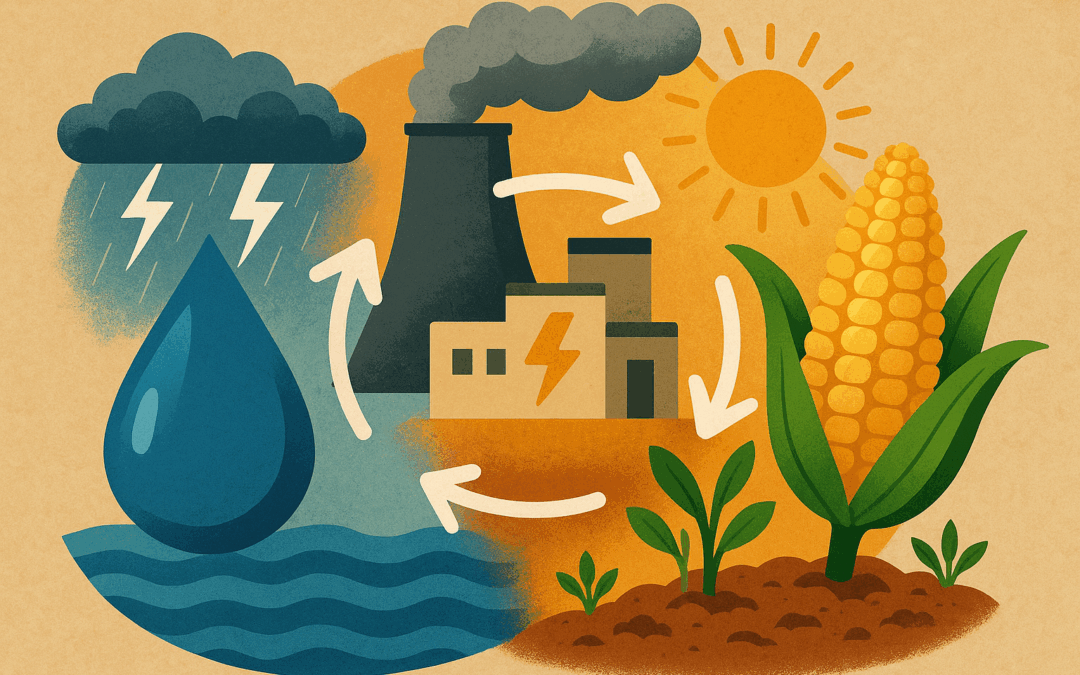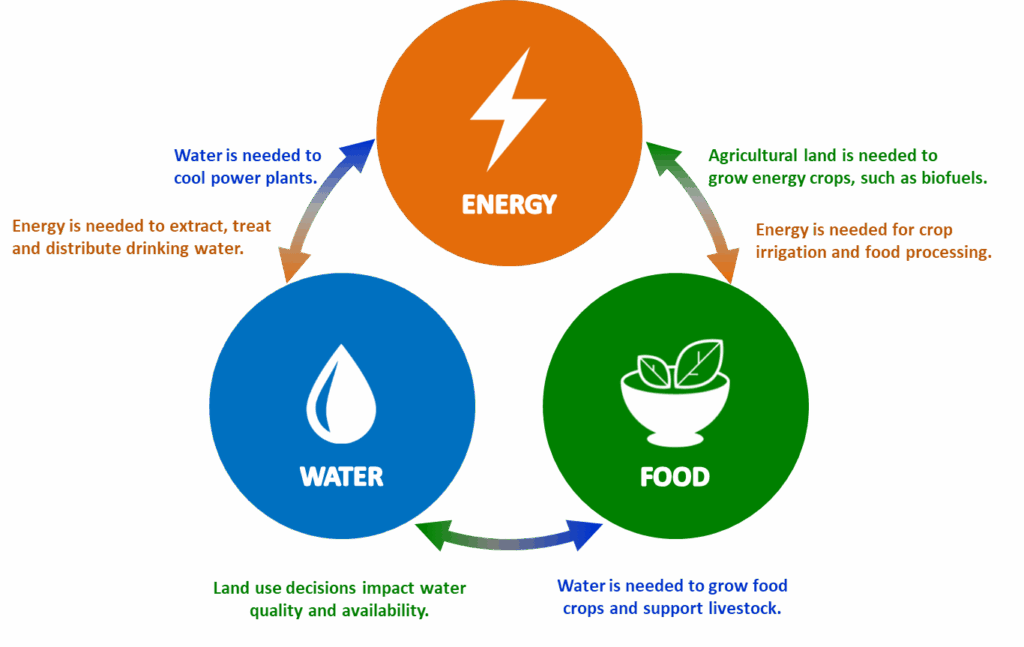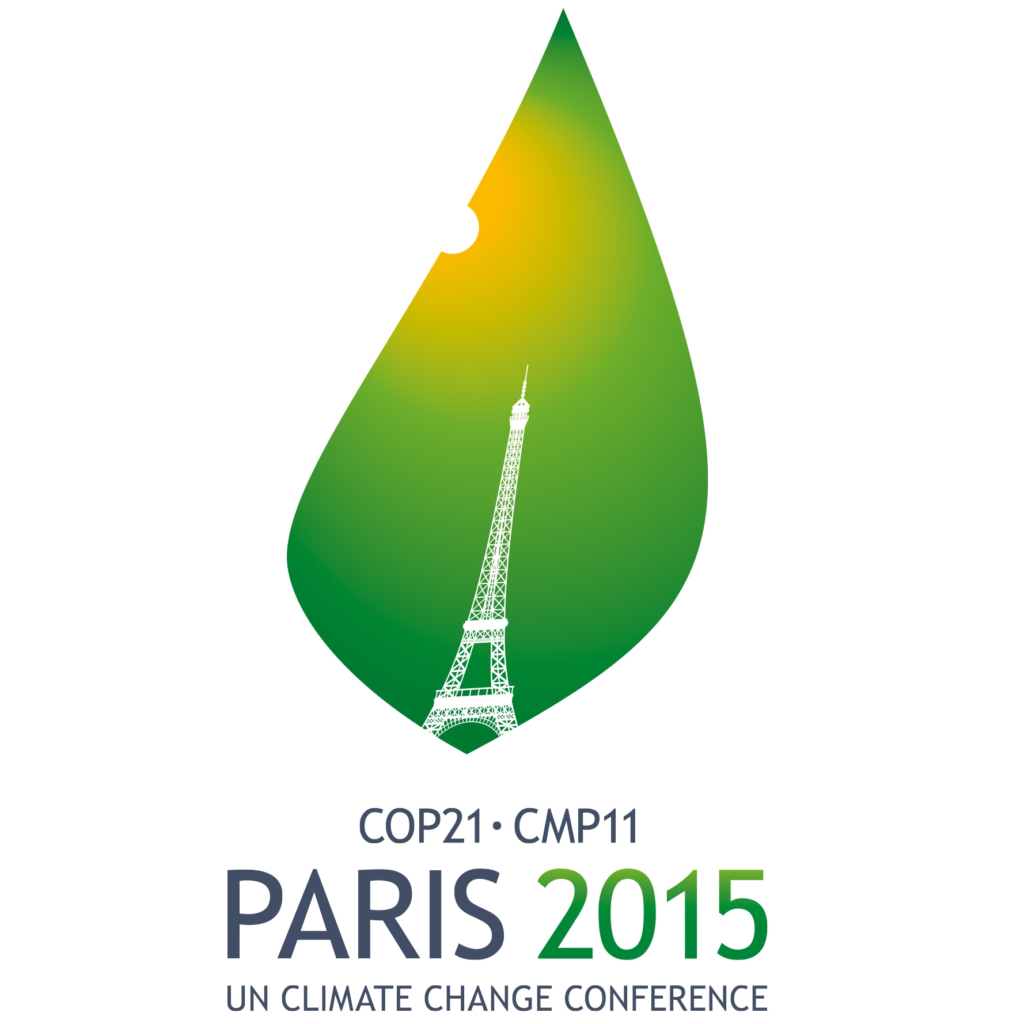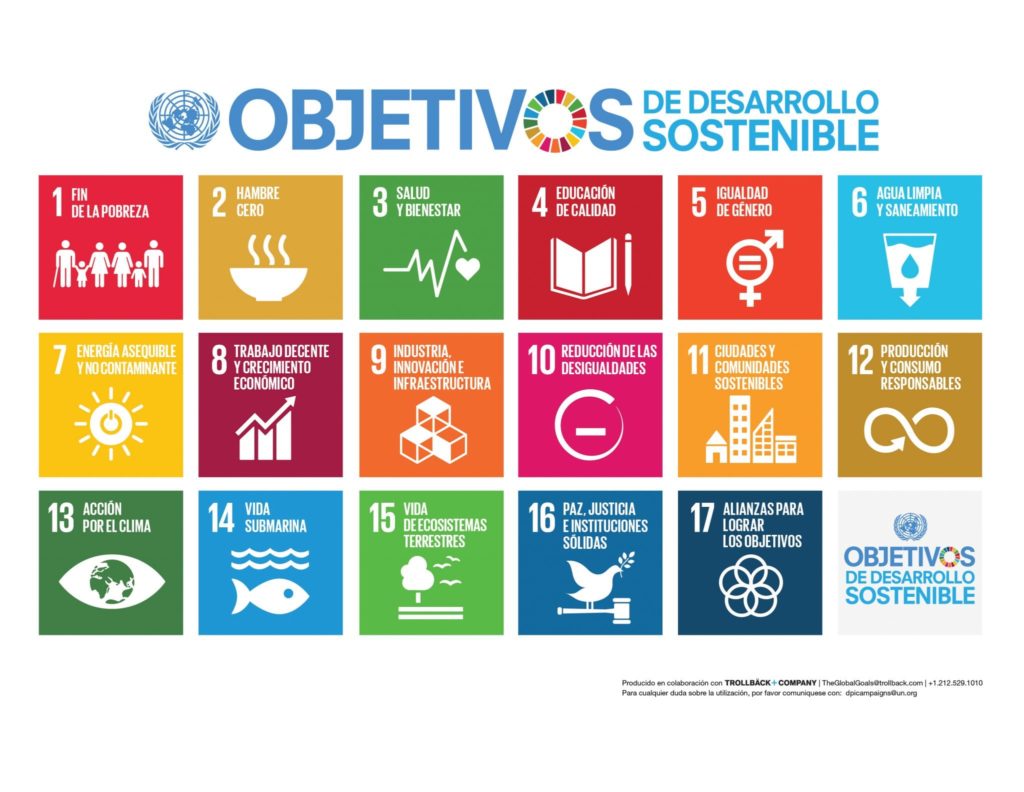
From water to plate and from plug to field
Three problems, one only answer: water-energy-food nexus
This year we´ve experienced situations as diverse as a widespread blackout that left us without power and basic services for several hours; a period of intense rain that, while providing sufficient water, also caused flooding in certain regions, and heat waves that have led to fires and droughts affecting forests and farmland.
If all these events are causing a huge headache for us, who live in a socially and technologically developed country with the capacity for prevention and response, it is logical to assume that in other contexts with far fewer possibilities, their impacts will be exponentially more damaging.
A clear example of this is the African continent, which, despite having a vast array of natural resources, constantly faces energy, food, and resource management challenges. To make matters worse, its current and future economic and demographic development only exacerbates these problems, as greater social growth implies greater demands for electricity, water, and food.
Everything is connected (even it seems it doesn´t)
When we experience a drought, our minds often focus on the lack of water for drinking or irrigating crops. However, a drought can also mean less hydroelectric production and, therefore, more pressure on the grid and electricity prices. If harvests are reduced due to lack of water or extreme heat, food production plummets and, consequently, food prices skyrocket. If a power outage prevents water from being pumped or food from being stored, the problem worsens.
This web of interdependencies is no coincidence. Water, energy, and food form an interconnected system where any change in one element can trigger effects on the others. That’s why the approach known as the Water-Energy-Food Nexus Methodology (or WEF Nexus Methodology) has been promoted for years.

What is the NEXO approach?
NEXO proposes, like many other theories, that the best way to address challenges related to natural resources is to move away from traditional silo thinking (understanding each resource as an individual entity, separate from the rest) and instead approach them in an integrated manner, understanding them as complex and interconnected systems in which acting on one will affect another, either negatively or positively. This systemic methodological approach analyzes how water, energy, and food interact with each other, while also including the influence of other associated factors such as the economy, demographics, climate change, and so on.
Rather than thinking “how do we improve agriculture?” or “how do we guarantee the electricity supply?”, the NEXO approach leads us to ask how we can guarantee sustainable access to all three resources simultaneously, without harming any and maximizing joint benefits. This approach allows us to anticipate conflicts, optimize resources, and make more balanced decisions in highly complex contexts.
Model to understand (and to decide better)
But of course, understanding and predicting these relationships is not easy. How do you measure the impact of a new dam on agricultural production? What effect does an increase in fuel prices have on water use in a region? How does urban growth influence food security?
To answer these questions, we need to study how these relationships have worked in the past. This is achieved through real historical data that feeds models: tools that digitally represent the relationships between the different elements of the system. These models draw on historical values to simulate different future scenarios, allowing us to analyze the effects of different political or strategic decisions. They do not seek to offer a single answer, but rather to create a framework for evaluating alternatives and making informed decisions.
Africa has a real laboratory: ONEPlanET case
The ONEPlanET Project, of which CARTIF is a key partner and a key element, was born from this approach. As part of the Horizon Europe research program, ONEPlanET began in November 2022 and will hold its final event next October in Cape Verde. Its main objective is to contribute to sustainable development in Africa by creating a common WEF Nexus modeling framework, which allows for the simulation and evaluation of different policy and resource management alternatives. To this end, three river basins have been chosen as case studies: the Inkomati-Usuthu Basin (South Africa), the Bani River Basin (Mali-Ivory Coast), and the Songwe River Basin (Tanzania-Malawi).
The initial stages consisted of an in-depth study of the case studies, organizing in-person workshops with local stakeholders (NGOs, policymakers, universities, etc.). The more technical sections then began, involving the characterization of the specific models for each pilot, the collection of data to feed them, and the development of the models themselves and their visualization tools. Currently, work is focused on the presentation and accessibility of the results. To this end, two avenues have been designed: an online tool aimed at technical users and a board game to raise awareness among broader audiences about the challenges of the nexus.
CARTIF has participated in every stage of the project: from workshops with local organizations and data collection to the creation of the models and the development of the two results visualization options.
A tool to understand the present and design the future
Although ONEPlanET is being developed in Africa, the NEXO approach and the modeling tools it promotes are replicable anywhere in the world and at any scale, provided the required data are available. In an increasingly interdependent global context, marked by climate change, resource pressure, and growing uncertainty, understanding how water, energy, and food interact is more urgent than ever.
Because the challenges of the future and the present don’t come in watertight compartments. And neither should the solutions.



